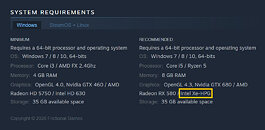
Intel Arc Battlemage Could Arrive Before Black Friday, Right in Time for Holidays
According to the latest report from ComputerBase, Intel had a strong presence at the recently concluded Embedded World 2024 conference. The company officially showcased its Arc series of GPUs for the embedded market, based on the existing Alchemist chips rebranded as the "E series." However, industry whispers hint at a more significant development—the impending launch of Intel's second-generation Arc Xe² GPUs, codenamed "Battlemage," potentially before the lucrative Black Friday shopping season. While Alchemist serves as Intel's current offering for embedded applications, many companies in attendance expressed keen interest in Battlemage, the successor to Alchemist. These firms often cover a broad spectrum, from servers and desktops to notebooks and embedded systems, necessitating a hardware platform that caters to this diverse range of applications.
Officially, Intel had previously stated that Battlemage would "hopefully" arrive before CES 2025, implying a 2024 launch. However, rumors from the trade show floor suggest a more ambitious target—a release before Black Friday, which falls on November 29th this year. This timeline aligns with Intel's historical launch patterns, as the original Arc A380 and notebook GPUs debuted in early October 2022, albeit with a staggered and limited rollout. Intel's struggles with the Alchemist launch serve as a learning experience for the company. Early promises and performance claims for the first-generation Arc GPUs failed to materialize, leading to a stuttering market introduction. This time, Intel has adopted a more reserved approach, avoiding premature and grandiose proclamations about Battlemage's capabilities.
Officially, Intel had previously stated that Battlemage would "hopefully" arrive before CES 2025, implying a 2024 launch. However, rumors from the trade show floor suggest a more ambitious target—a release before Black Friday, which falls on November 29th this year. This timeline aligns with Intel's historical launch patterns, as the original Arc A380 and notebook GPUs debuted in early October 2022, albeit with a staggered and limited rollout. Intel's struggles with the Alchemist launch serve as a learning experience for the company. Early promises and performance claims for the first-generation Arc GPUs failed to materialize, leading to a stuttering market introduction. This time, Intel has adopted a more reserved approach, avoiding premature and grandiose proclamations about Battlemage's capabilities.
































